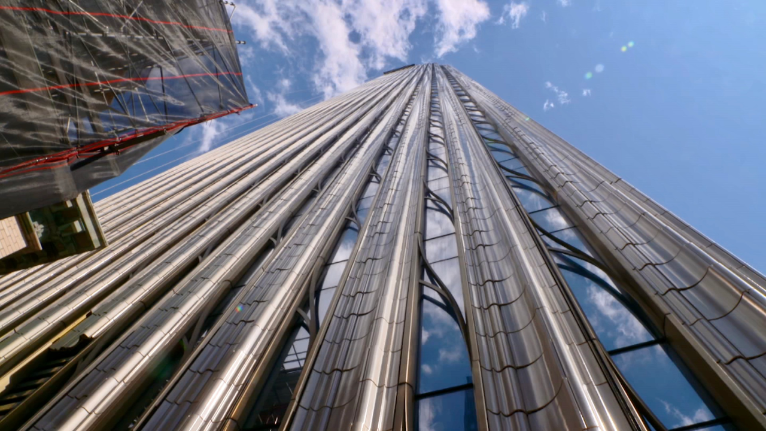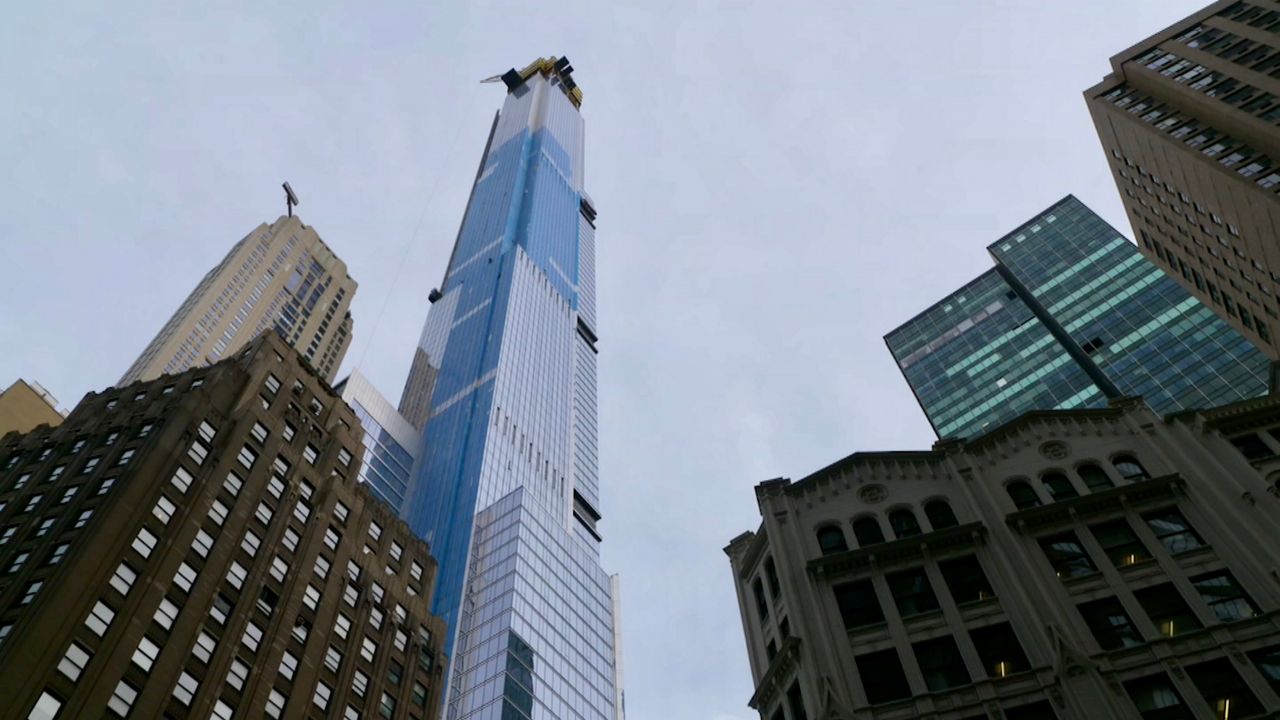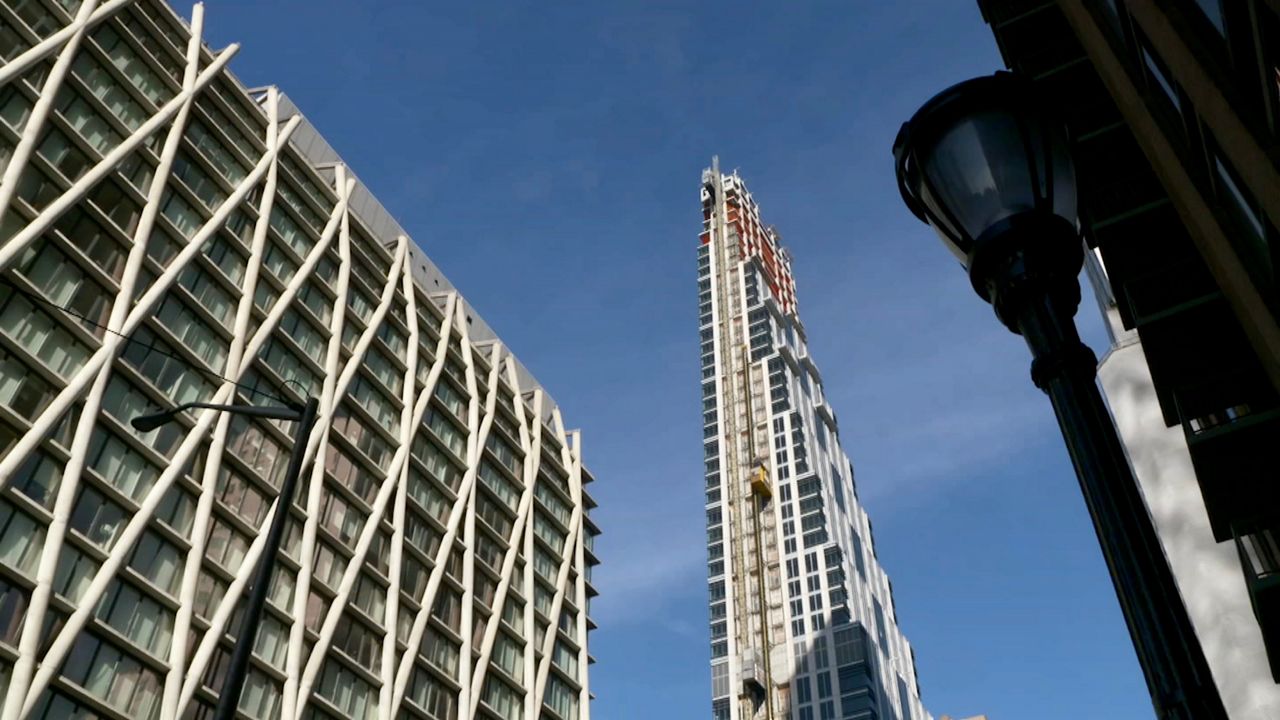Previously, we told you about how developers are using loopholes in the zoning laws to build higher than otherwise might be allowed. In Part 3 of his series, our Michael Herzenberg shows us how one building is rising taller than the Empire State Building, thanks to a rezoning plan enacted under Mayor de Blasio.
- Part 1: What's Behind the Supertall Skyscraper Boom Changing NYC's Iconic Skyline?
- Part 2: The Loopholes That Help to Send NYC Skyscrapers into the Clouds
This is the top of One Vanderbilt:

It is 1,301 feet above 42nd Street, about 50 feet taller than the Empire State Building. With the spire One Vanderbilt reaches 1,401 feet.
“It’s location, location, location,” says Edward Piccinich of the commercial office building.“It’s location, location, location,” says Edward Piccinich of the commercial office building. He is the COO of SL Green Realty Corp. “Whether it’s Central Park or looking downtown, [the] views are spectacular.”
But for a project like this to come together, one would have to consider a fourth dimension: time.
“We are going to occupy August 4,” says Piccinich. “We’re three months ahead schedule in large measure due to our ability to use 3D drawings.”
“From the acquisition of the first building on this site, it’s an approximately 20 year odyssey,” says Robert Schiffer, the managing director of investments for SL Green Realty Corp, the city's largest commercial landlord.
The odyssey began when the company started methodically scooping up buildings and development rights, so One Vanderbilt can rise so high.

It began in 2001, when SL Green bought 317 Madison Avenue. At first, the company planned to renovate the building to hike the rents, but it switched gears six years later when two buildings next door went on the market.
“We pounced on these two buildings knowing that … we own 70 percent of a one acre site immediately adjacent to grand central,” Schiffer says.
Sl Green decided it would knock down all the buildings and replace them with something big.
In 2011, the final piece of the puzzle fell into place. Another adjacent building, 51 East 42nd Street hit the market. SL Green bought it.
The price of the four properties: about $300 million.
“The four buildings that occupied this site were 100 percent leased,” Schiffer says. “We had to buy out over 150 tenants lease by lease in order to clear those buildings … We had to demolish four interconnected structures.”
Under New York City’s zoning rules, a new building cannot rise much higher than 600 feet, but SL Green was able to make One Vanderbilt more than twice as tall.
How?
By owning the landmarked Bowery Banks Savings Building, SL Green transferred the Bowery's unused development rights to the One Vanderbilt site, bringing its potential height to 700 feet.

“It was right around that time we heard the Bloomberg administration was hoping to rezone all of greater East Midtown,” says Schiffer.
The planned rezoning allowed for denser, taller buildings in return for improvements to subway stations and public spaces. The goal: to revitalize 78 blocks around Grand Central Terminal.

Once the rezoning was approved under Mayor de Blasio, SL Green agreed to spend $220 million on transit and public space improvements, in effect buying the air rights allowing One Vanderbilt to rise another 700 feet.
NY1 was able to piece together the saga of how One Vanderbilt grew to be so tall because of information we found in public records and because SL Green was willing to talk about how it acquired all those air rights under the city's byzantine zoning rules. But many developers are not as forthcoming.









